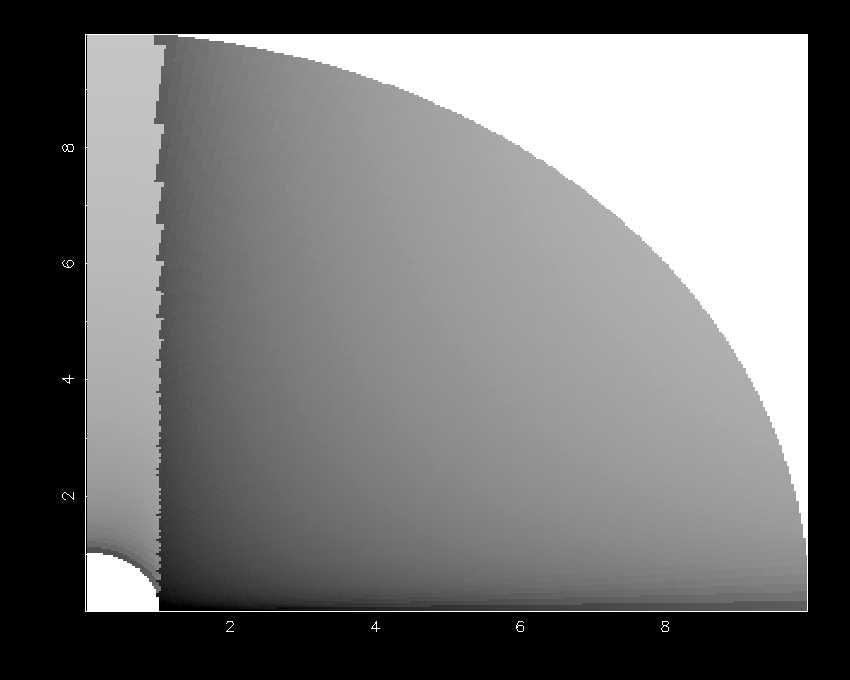
Please note: the animated gif file is large (9 MB) and it may take
a while to load it into cache. Once there, however, the movie plays at
its intended speed. So, please be patient.
Simulation of a line driven wind from an accretion disk
- The wind is driven by radiation pressure in spectral lines
- The gas in the (massless) disk accretes onto a dark central star
- Such a wind could occur in Cataclysmic Variables or in Young
Stellar Objects (or, with certain alterations, in AGN)
- The disk extends from 1 to 30 stellar radii along the x-axis
- The disk gas is on Keplerian orbits
- The temperature run in the disk as function of radius is T ~
r^(-1/2)
- The overall disk Eddington factor is 0.01 for Thomson scattering
on electrons
- ...which implies an Eddington factor of ~ 20 for scattering in
spectral lines!
- The wind is driven by momentum transfer (and not
primarily by energy transfer) from disk photons to metal ions
- Coulomb collisions distribute this momentum gain over the whole
plasma (mostly ionized hydrogen)
- The movie shows the density above the disk, where thin regions
are in white, dense regions are in black
- The movie starts from a rather arbitrary initial model
- ...but the final images show a quasi-periodic limit cycle of
dense streamers above the disk
If you want to read three papers on hydrodynamics of line driven
winds, my recommendations are
- Castor, Abbott, and Klein, 1975,
Radiation-driven winds in Of stars , Astrophysical
Journal, 195, 157
(Tough reading, but it's all there)
- Owocki and Rybicki, 1986,
Instabilities in line-driven stellar winds. III. Wave
propagation in the case of pure line absorption ,
Astrophysical Journal, 309, 127
(For the mathematical surprises
encountered for wave propagation in unstable media)
- Blondin, Kallman, Fryxell, and Taam, 1990,
Hydrodynamic simulations of stellar wind disruption by a compact
X-ray source , Astrophysical Journal, 356, 591
(For
what are probably still the most impressive images from a 2-D wind
simulation)

